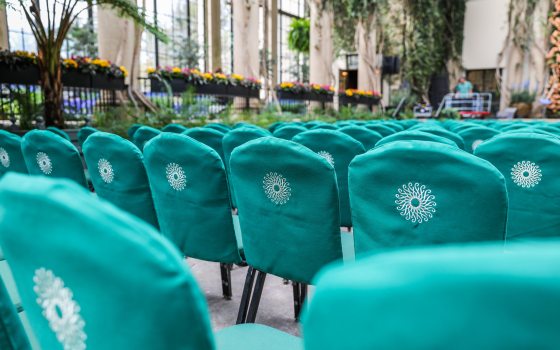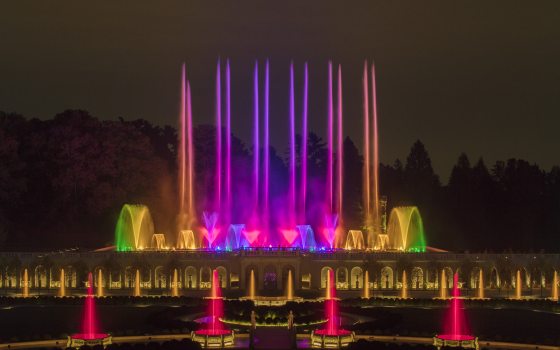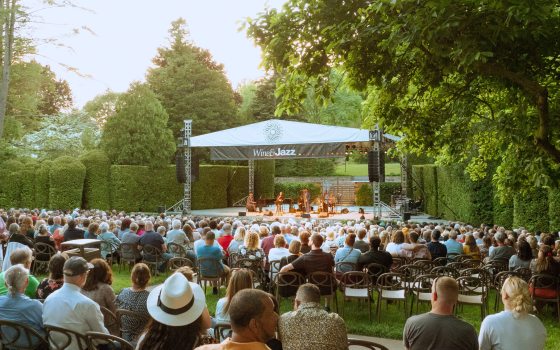Whether it is the radiating sounds of instruments, striking vocals, palpable passion of the performers, or all of the above, there’s something special about live music. At Longwood, it’s made even more spectacular amongst the beauty of our Conservatory. Our sensational Indoor Performance Series begins in January, and we’re counting down the days. In the meantime, we had the pleasure connecting with two of our 2025 Indoor Performance Series artists, Anat Cohen of Anat Cohen Quartetinho and John Hodian of The Naghash Ensemble, to get their thoughts on their upcoming performances … and their love of playing live.
For Grammy-nominated clarinetist-saxophonist Anat Cohen—who is performing with her quartet in our Ballroom this April—performing at Longwood is quite special. “While performing at Longwood Gardens, you feel the history and the atmosphere of the place … and you can feel the magnitude of the Gardens as a whole,” she shares. “The whole place gets tangled together with the music.” Cohen has dazzled our Wine & Jazz Festival audiences in 2019 and 2013, performed in our Ballroom in 2015, and on April 11 will fill our Ballroom again with her trademark virtuosity and talent—she’s been declared Clarinetist of the Year by the Jazz Journalists Association every year since 2007. Anat Cohen Quartetinho consists of Cohen on various clarinets, Tal Mashiach on bass and guitar, Vitor Gonçalves on piano and accordion, and James Shipp on vibraphone and percussion.
For The Naghash Ensemble, a gathering of some of the finest musicians and singers in Armenia, their March 2025 performance in the Exhibition Hall will be their first time performing at Longwood—though, for composer John Hodian, this won’t be his first time visiting. “This concert will be very special for me,” says Hodian. “Everyone in The Naghash Ensemble was born in Armenia except for me, though I am of Armenian ancestry. I was born in Philadelphia and grew up in the area. Bringing the ensemble to Longwood Gardens feels like a homecoming!” Hodian now resides in Yerevan, Armenia.
For both Cohen and Hodian, the cross-cultural connections they can draw between different genres of music from all over the world sparks their creativity.

"This journey of being a musician coincides with the journey of being a person. You think you are studying music, but music is there to teach us about our own intentions and capabilities.” – Anat Cohen. Photo provided by Anat Cohen.
Growing up in a musical family was also an enormous and formative part of Cohen’s love of music, and one of her greatest inspirations. A shared love of jazz and improvisational music connects her with her brothers—and they have a common passion for being spontaneous, challenging themselves, and playing live. “(It was) a really profound way to know each other,” Cohen reflects. “We spoke the language of our family which was so tied with the music we loved. (We learned) how to follow each other, understand each other’s own musical processes, and our uniqueness from one another. People dancing (to Afro-Cuban music) is a big inspiration for me. I am inspired by people who let music free them and allow themselves to react to it instinctually. I want my music to do that—create a reaction.”
As with Cohen, when Hodian reflects on his influences, he thinks of his family. “One of the things that is interesting about the music The Naghash Ensemble performs is that it draws on a lot of different influences. Growing up in a tight-knit Armenian community, all the music in my father’s record collection and at church and weddings was Armenian,” says Hodian. “But I was also drawn to western classical music, American composers, early medieval polytonic vocal music, and more. The music I write for The Naghash Ensemble is as much new classical as it is world or folk music.”
The Naghash Ensemble has a fascinating origin story of strangers coming together to create magical music. “When I first arrived in Yerevan 20 years ago, I found myself at the Garni Temple, the sole surviving pagan temple in Armenia,” says Hodian. “This is where I suddenly heard this unbelievable singing.” Hodian was hearing the beautiful voice of Hasmik Baghdasaryan—who to this day is the lead soprano of the ensemble—and she was singing medieval Armenian spiritual music. Her astounding voice and the unique acoustics of the temple stayed with Hodian for days afterward, and he became determined to write something that would use this sound in a new way.
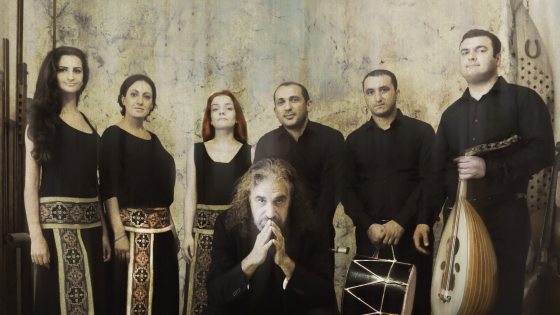
"Composer Igor Stravinsky once said ‘Bad composers borrow. Good composers steal,’” says Hodian (middle), while reflecting on the magic of being inspired by Baghdasaryan’s beautiful voice and then forming a wider ensemble. Photo provided by The Naghash Ensemble.
Above all, Hodian and Cohen are fascinated by the magic of playing live. “Certain types of ensembles come together when they are onstage,” Hodian says. “You need the pressure cooker. There’s nothing like seeing certain type of bands live and The Naghash Ensemble is very much an ensemble to experience live.”
“The trust-building that happens when you play for a while with a group of people is fascinating,” Cohen reflects. “As you play more and more with the same group, you develop a kind of shorthand. Yet people are still full of layers and surprises. It’s beautiful to discover people through music—as sometimes music enhances sides of their personalities you may not otherwise see.”
Cohen describes a transformative experience of playing live in Rome where “the music became so intense, and I felt like the whole band was elevated to another dimension. We were physically there, but in our minds, we were in another sphere—and the audience was there too. It was so pure and honest. That’s where I want to be. Entering the music sphere was so meaningful. That is what us musicians live for.”
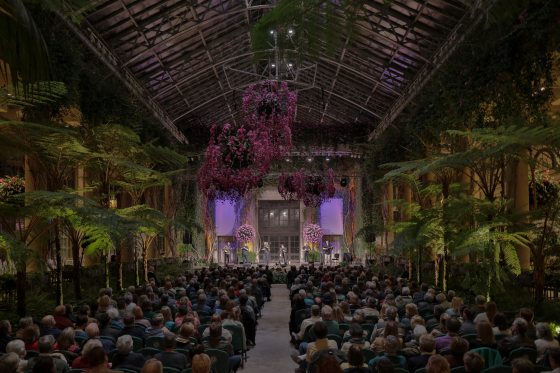
"Ultimately, during my April performance at Longwood, I want the audience to experience an authentic moment of just being alive all together.” – Anat Cohen. Photo by Daniel Traub.
Extraordinary moments much like the ones Cohen described—when everything falls away and just the beauty of the live music remains—await you with the 2025 Indoor Performance Series, and we can’t wait to experience them with you.
Editor’s note: Tickets are on sale now for our 2025 Indoor Performance Series, featuring Anat Cohen Quartetinho and The Naghash Ensemble along with many other marvelous performers and several Longwood debuts.
